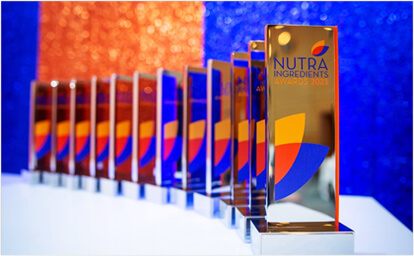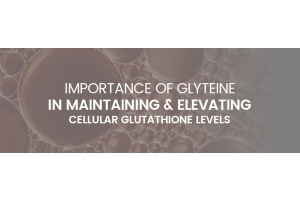The quest for energy
There aren’t many of us who haven’t longed for more energy and enhanced athletic performance. And you don’t need to be an Olympian to seek out an improvement in stamina and shorter recovery times. Even if you are only moderately active, your everyday physical activities can quickly drain your energy.
We all understand that training and regular exercise will improve our performance, but how does our body deal with energy demand? Is it simply a matter of more calories consumed equals greater energy? Well, we certainly need to provide our body with nourishment, but energy production is much more than that. Inside each one of our cells, an intricate process converts glucose and oxygen into ATP. And this little molecule powers every aspect of our body’s energy needs throughout our lives.
But everything comes with a cost, and so does energy production. For an in-depth understanding of how our cells produce energy - as well as its consequences - read our blog on cellular energy cellular energy.
Chasing your peak
High-performance athletes are very much in tune with their bodies. Training for peak performance is just as important as understanding and recognizing your body’s limits. This is the reason athletes take the recovery phase of intense exercise very seriously. But why is recovery so crucial to success?
Our body is a marvellous machine that we can train to achieve impressive athletic accomplishments. But the energy we expend chasing these achievements needs to be replaced, and that doesn’t happen in an instant. No matter how fit you are, peak energy production is finite, and we eventually require rest. And this comes down to the depletion of a vital antioxidant that the body produces in every cell: Glutathione!
Athletes understand glutathione’s crucial role in energy production and the mopping up of free radicals produced by their activity. But more importantly, they realize that to replenish glutathione they need to rest.
After about 10 minutes of intense exercise, glutathione can become depleted and depending on the intensity of work performed, it can then take up to 24 hours of rest to be replenished. Let’s have a look at what role glutathione plays in athletic performance.
Glutathione's many roles
A lot of things happen in your body during intense athletic performance. The main issue, however, is increased free radical production because of increased energy demand. Glutathione’s task is to neutralize these free radicals, but eventually, as athletic performance and energy needs continue, glutathione production can’t keep up with the constant production of free radicals. This has unfortunate consequences, which include:
- Excess free radicals which go on to damage vital cellular components like membranes, DNA and structural proteins like collagen and keratin.
- Increased inflammation
- Bad lifestyle habits
- Suppressed immune function
- Joint and muscle soreness and impaired performance
If the body is unable to replenish cellular glutathione, these symptoms will progressively worsen leading to oxidative damage, toxin build up, exhaustion and susceptibility to illness.
But glutathione also plays a vital role in endurance. The energy powerhouse of our cells, the mitochondria, produce ATP, the molecule responsible for providing us with sustained energy. When energy demand increases during athletic activity, mitochondria ramp up ATP production to ensure we can continue in our quest. But they can only do so if there is sufficient glutathione in our cells.
Once glutathione levels fall, the risk of damage to the cell increases. This triggers mitochondria to downregulate ATP production as a defensive mechanism. The importance of sustained glutathione levels is therefore critical during and after both athletic and non-athletic intensive workouts.
But there is yet another vital function in glutathione’s arsenal. The cells of our muscles undergo changes as we challenge them and require repair and regeneration. Glutathione assists in this process by preserving and protecting the critical players in muscle recovery - nitric oxide, proteins and amino acids - from oxidative damage.
Maintaining cellular glutathione levels
We now understand why glutathione can be considered an athlete’s best companion. Maintaining cellular glutathione at optimal levels before, during and after exercise is essential for endurance, muscle recovery and protection from damaging free radicals. But how can serious athletes and fitness enthusiasts ensure a steady supply of glutathione during their activities? Until recently there was no satisfactory answer to this question.
The importance of glutathione has been known for decades, with countless published scientific papers on the subject. The problem was the inability to replenish glutathione inside the cell where it is required to perform its remarkable and wide-ranging functions.
Although the current market boasts a vast variety of supplements that claim to increase glutathione, none have known to actually do so inside the cell. The most obvious contender, glutathione itself, shows very little promise as it cannot be absorbed by cells. It therefore remains in blood plasma and is broken down into its constituent amino acids. Marketing companies have come up with a litany of so-called enhanced forms of glutathione such as intra-oral sprays, intra-nasal, liposomal and so on. But all of them are just glutathione in different packaging. Other products such as NAC and other cysteine prodrugs only provide a supply of cysteine, which the body isn’t lacking. They have never been shown to increase cellular glutathione in otherwise healthy individuals, including athletes. But there is one new breakthrough ingredient that has been clinically proven to do so safely and rapidly.
Glyteine®, available in Continual-G®, has been clinically proven to enter cells where it is immediately converted to glutathione. Glyteine® provides athletes and fitness enthusiasts with the confidence they need to pursue their goals by providing a safe and natural way to ensure optimal cellular glutathione levels. Glyteine® is unique in this ability and can be conveniently consumed before, during and after intensive exercise for superior performance, endurance, and recovery.







